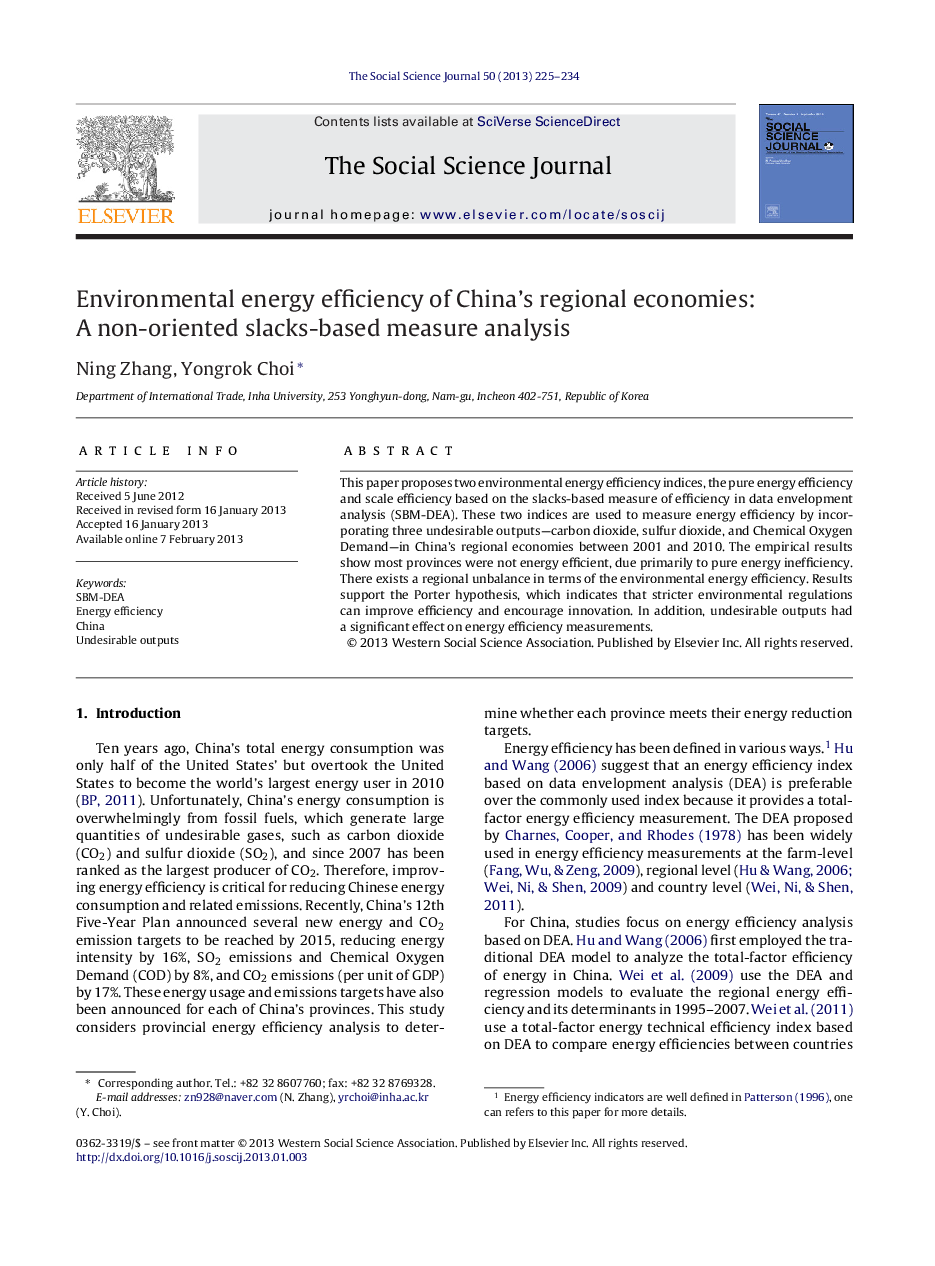| Article ID | Journal | Published Year | Pages | File Type |
|---|---|---|---|---|
| 140310 | The Social Science Journal | 2013 | 10 Pages |
This paper proposes two environmental energy efficiency indices, the pure energy efficiency and scale efficiency based on the slacks-based measure of efficiency in data envelopment analysis (SBM-DEA). These two indices are used to measure energy efficiency by incorporating three undesirable outputs—carbon dioxide, sulfur dioxide, and Chemical Oxygen Demand—in China's regional economies between 2001 and 2010. The empirical results show most provinces were not energy efficient, due primarily to pure energy inefficiency. There exists a regional unbalance in terms of the environmental energy efficiency. Results support the Porter hypothesis, which indicates that stricter environmental regulations can improve efficiency and encourage innovation. In addition, undesirable outputs had a significant effect on energy efficiency measurements.
► SBM-DEA is used in Chinese environmental energy efficiency analysis. ► Total environmental energy efficiency is decomposed into pure energy efficiency and scale efficiency. ► 2005 is the turning point of energy efficiency. ► Porter hypothesis is supported by empirical results.
